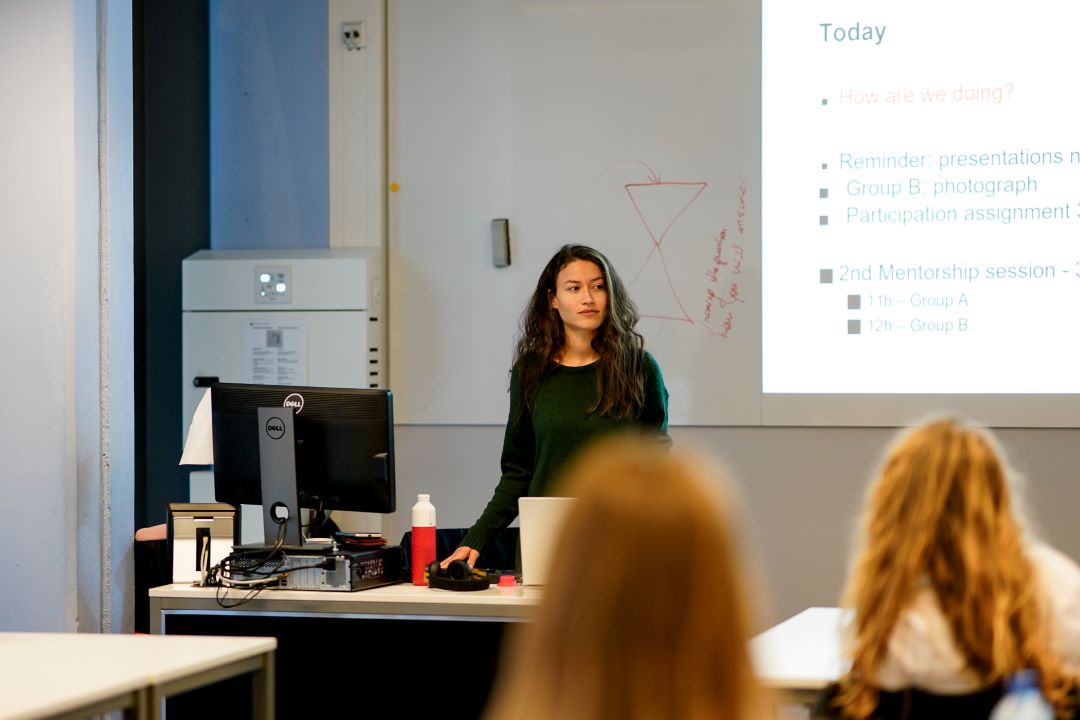
On campus vs. online education
A false dichotomy
Lessons learned in online education with prospective on campus education
Dr. Hillie Aaldering and Dr. Brigitte ten Brink researched the advantages and disadvantages on online education. There are different ways on how to implement these new methods of education. In this article the upsides and downsides of online education will be treated.
These are based on scientific literature around self-regulation and motivation, and on four focus groups with students (total N = 17) from Work and Organizational Psychology who have taken part in online education during the Covid-19 pandemic in 2020 and 2021.
Lecture/knowledge clips
Upsides
- Students can determine their own pace while watching the clip. Difficult information can be replayed, and the clips can be paused and rewatched. This enhances and ensures focus, attention and retention. Students all expressed appreciation for knowledge clips and the fact that they can be adapted to their own learning pace.
- Students can choose when exactly to watch the clip and thereby fit it in their preferred schedule.
- Knowledge clips can be used multiple years.
Downsides
- The knowledge clips do not provide opportunity to interact with the teacher. A solution is to combine them with interactive (Q&A) sessions.
- This freedom may cause students not to watch the clips at all. A solution is to make the watching of the clips obligatory. An alternative is to allot time during an online interactive lecture to watch the clips.
- Knowledge clips do not promote cohesion with other students. A solution is to combine them with interactive and activating sessions.
Interactive sessions combined with knowledge clips
Upsides
- The interactive (Q&A) sessions provide an opportunity for discussion and asking questions about the knowledge clip information.
- The interactive (Q&A) sessions provided a base to further process and apply the information from the knowledge clips.
- Students appreciate the freedom to go to these interactive (Q&A) sessions or not. If they don’t have questions, they can choose not to go.
- Particularly for the students who are present it is nice to be together and interact with the teacher in a low-key manner.
Downsides
- The fact that these interactive (Q&A) sessions are often not mandatory means that only a fraction of the class shows up. A solution would be to make them mandatory and also expand the focus from only Q&A to a session where students engage with the material in an (inter)active way.
- When only a small fraction of the class is present it does not help to form cohesion with a group. A solution would be to make them mandatory and also expand the focus from only Q&A to a session where students engage with the material in an (inter)active way.
Online vs. on campus peer-to-peer interactions
Upsides
- Break-out rooms allow for a nice and quiet space where students can nicely work together and really focus on the material to be discussed.
- Compared to online lectures, tutorial meetings are interactive; students don’t have to listen only to one person talking, so it is easier to stay focused and pay attention; students get more engaged and feel obligated to participate actively with their peers.
- When meeting up for group work, it is easier for students to find suitable dates and times when meeting online.
- Interim consultations meetings for group assignments and collaboration can be easily organized online with online tools.
- Students mention that collaboration with other students helps to plan and set deadlines because they don’t want to let each other down.
- Online working groups are appreciated because of the possibility to interact with other students and the teacher and to apply or discuss knowledge.
Downsides
- Not everyone contributes during an online tutorial, some students do not even turn on their camera which also demotivates students who do want to put effort. A solution is to emphasize individual contributions and responsibility, ensure the need for students to interact and stay engaged, and set a norm of having cameras on. However, the teacher cannot monitor what happens in all break-out rooms and these solutions are hard to achieve in a large group.
- There are process losses. It can take time to get on the same page, to share screens, to understand the assignment and be sure that everyone has the same understanding, more so online than on campus.
- In online working groups it is more difficult to create group cohesion than in on campus working groups. A solution is to make sure to combine online activities with on campus activities.
- The quality of the interactions with students and teachers were perceived worse online than on campus. A solution is to make sure to combine online activities with on campus activities.
A false dichotomy
Overall students experience many benefits of online education. There are many different forms that each have advantages and disadvantages. Most promising combinations of online components and face-to-face education seems to be short online lecture clips, combined with on campus interactive sessions with digital tools and on campus tutorials. Although these combinations seem promising, it is important to keep in mind that the design of the course should fit the learning goal. Designing on campus or online education should not be a goal in itself, but a means to effectively and efficiently reach the learning goals of the course (Biggs & Tang, 1999). In short, the combination between online and on campus education is a promising combination, showing the concept ‘online versus on campus’ as a false dichotomy. You can find the entire report in the link below.






